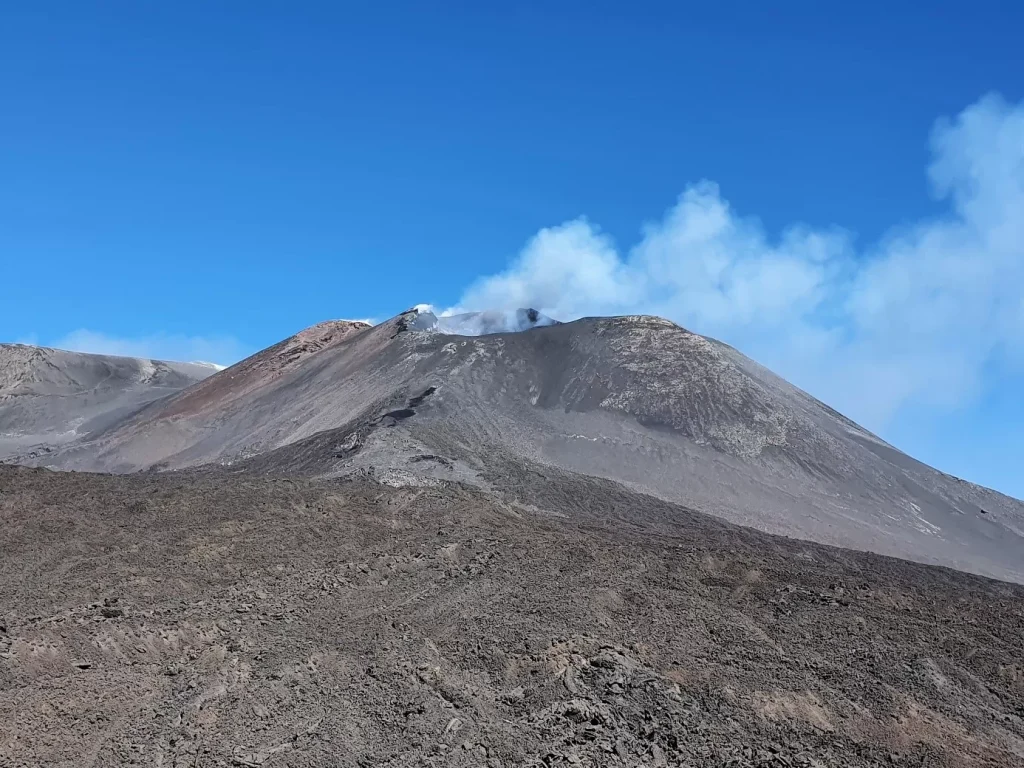Etna has always fascinated people – as the source of great ruin and great fertility. There are therefore many legends and myths surrounding this volcano, from which we would like to give you a small extract today.
The forge of Hephaestus
Hephaestus is the Greek god of fire and blacksmithing. The Romans later gave him the name Vulcan, from which the word “volcano” derives. His story begins with little glory: he was such an ugly baby that his mother Hera threw him down from Mount Olympus, the home of the Greek gods, after he was born. He injured himself from the fall so that he limped from then on. He is therefore also known as “the lame one”.
Fortunately, nymphs found and raised him. These have taught him the blacksmith’s trade, in which he achieved the greatest skill. He not only made jewelry for the nymphs, but also the weapons for the gods of Olympus and numerous cunning inventions. He sent his mother Hera a self-made golden throne as a gift. As she sat on it, a mechanism was triggered that tied her to the throne so that she could no longer free herself. In this way, Hephaestus “thanked” his mother for being expelled from Olympus.
What does this have to do with Etna? Hephaestus has set up his blacksmith’s workshop in the interior of Etna; in the fires of the volcano, he forged his invincible weapons. So, if you hear a rumbling thunder on one of our tours, it might be the hammer of Hephaestus hitting his anvil (or an explosion inside the southeast crater or another main crater).
The immortal (?) Empedocles
An extremely fascinating personality was Empedocles, a Greek philosopher, politician and naturalist who lived in today’s Agrigento (a city in western Sicily, then a Greek colony). He was a pre-Socratic and dealt in particular with nature and the 4 elements (fire, water, earth and air). He was very interested in Mount Etna and wanted to research its phenomena, the craters, eruptions and lava flows, and is therefore said to have lived on Etna as well.
When they started to build a mountain hut at the foot of the Barbagallo craters at an altitude of about 2900 m in the 1960s, they found the remains of a tower under the lava rock. Was this the house of Empedocles? In any case, this rifugio was given the name “Torre del Filosofo” (Tower of the Philosopher). The hut was supposed to be turned into a hotel and a research station, but this never happened. The 2002 eruption covered it completely; only the site still bears this name. On our Etna South tour we marvel at the activity of the Southeastern Crater from there.
Empedocles is said not only to have lived on Etna, but he is also said to have died there: The stories surrounding his death are very diverse. According to some sources, Empedocles was convinced of his immortality and wanted to jump into a crater to unite with nature and the elements. However, others claim he was exiled in Greece and the story of the fall into Mount Etna was invented by his followers to underpin his immortality and divinity. Allegedly, a little later, Etna spat out a shoe of Empedocles and thus brought the truth about the death of the philosopher to light.
Because Empedocles studied the Etna volcano so intensively, an underground volcano was named after him. The Empedocles volcano is located in the Strait of Sicily, between Sicily and the island of Pantelleria. It is the highest point of a volcanic massif consisting of 13 volcanoes, which sometimes, when it erupts, rises briefly out of the water and thus forms a small island.
Queen Elizabeth I’s shoe
Another story about Etna is about a shoe: The British Queen Elizabeth I was a very successful monarch in the 16th century. The Elizabethan era represented a cultural and economic boom. The reason for her successful politics and for her long reign of 44 years should not only have been intelligence and talent, but also a pact with the devil, to whom she promised her soul in return for her success. After a long successful reign of Elisabeth, he wanted to get his wages and without further ado threw her into Mount Etna, which was considered the gateway to hell.
One of the queen’s shoes is said to have fallen to the ground, which a shepherd later found. However, this shoe only brought bad luck to the shepherd and to all further owners. So if you see a shoe on one of our tours…. Hands off! 😉
However, maybe you will discover a gnome guarding a treasure in one of Etna’s lava tunnels. Or on a hike through the enchanting birch forest on the north side of Mount Etna you hear a quiet crackling and whirring noise and a fairy wing disappears under one of the silver-white trunks of the Etna birches.
Who knows … if you have open eyes and ears, you can discover many wonders on Etna.

